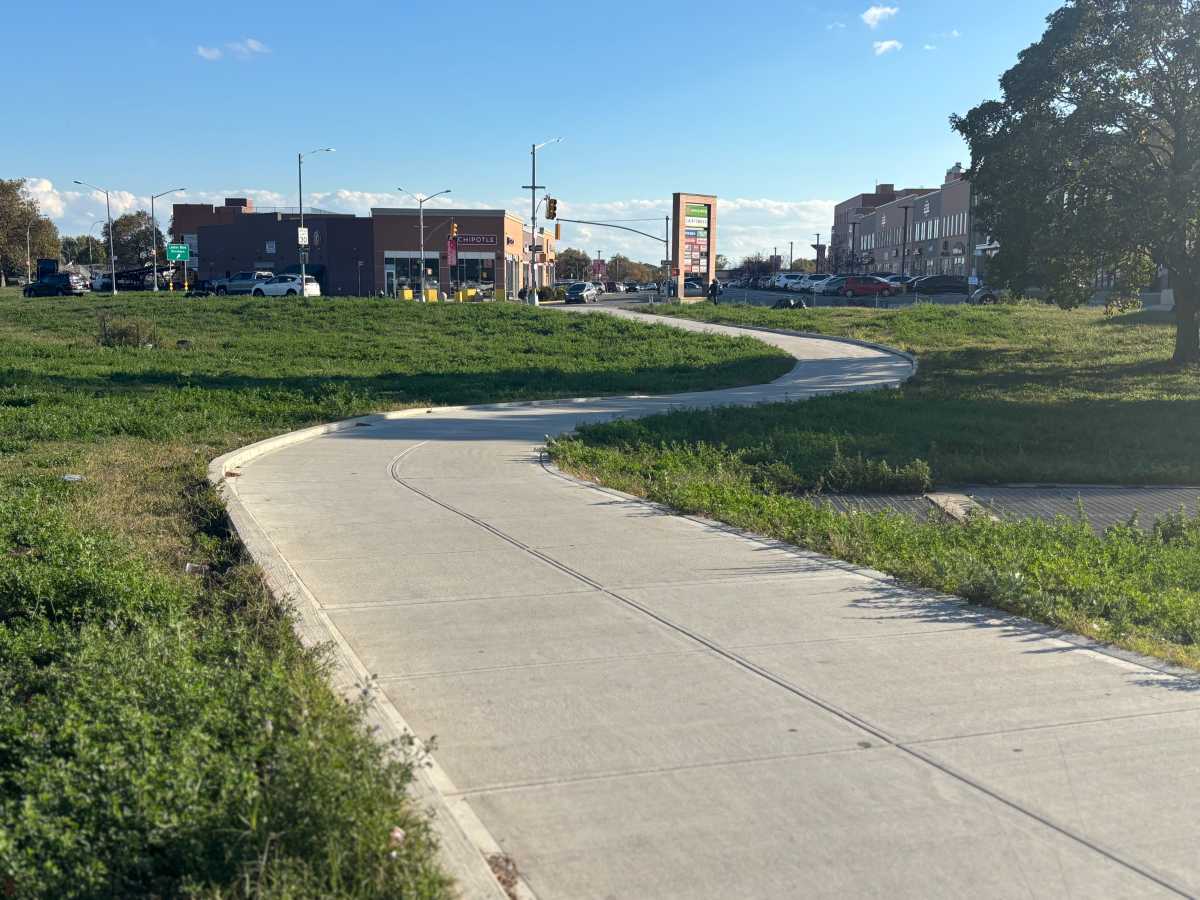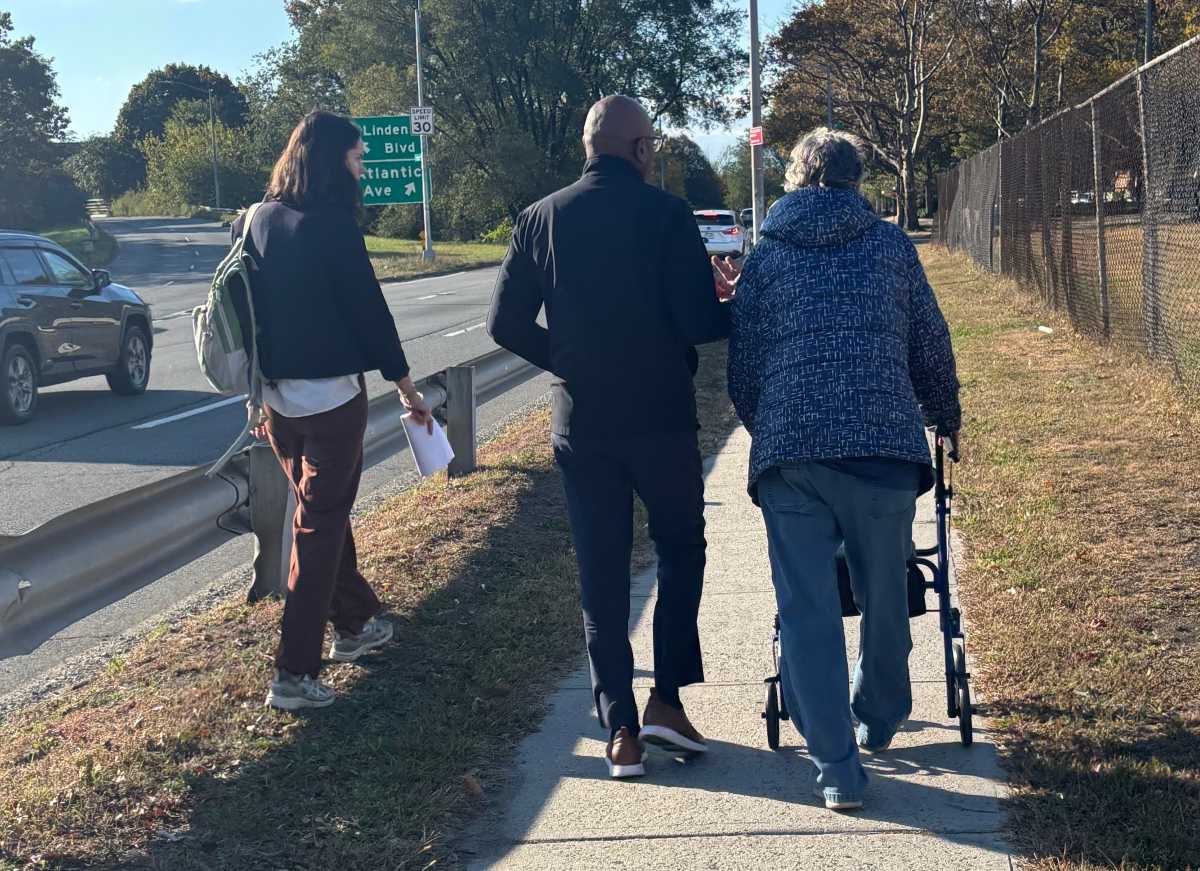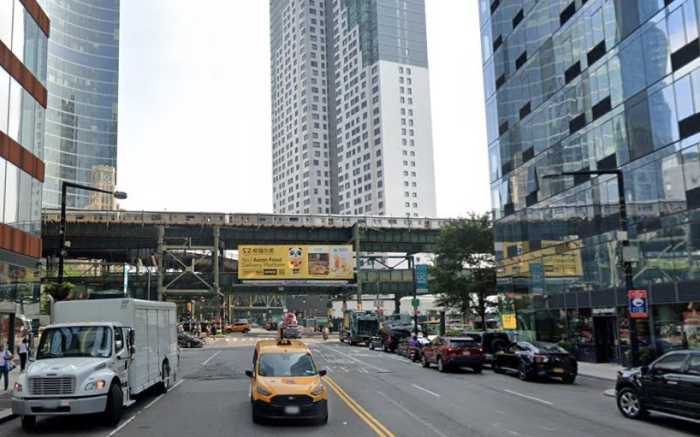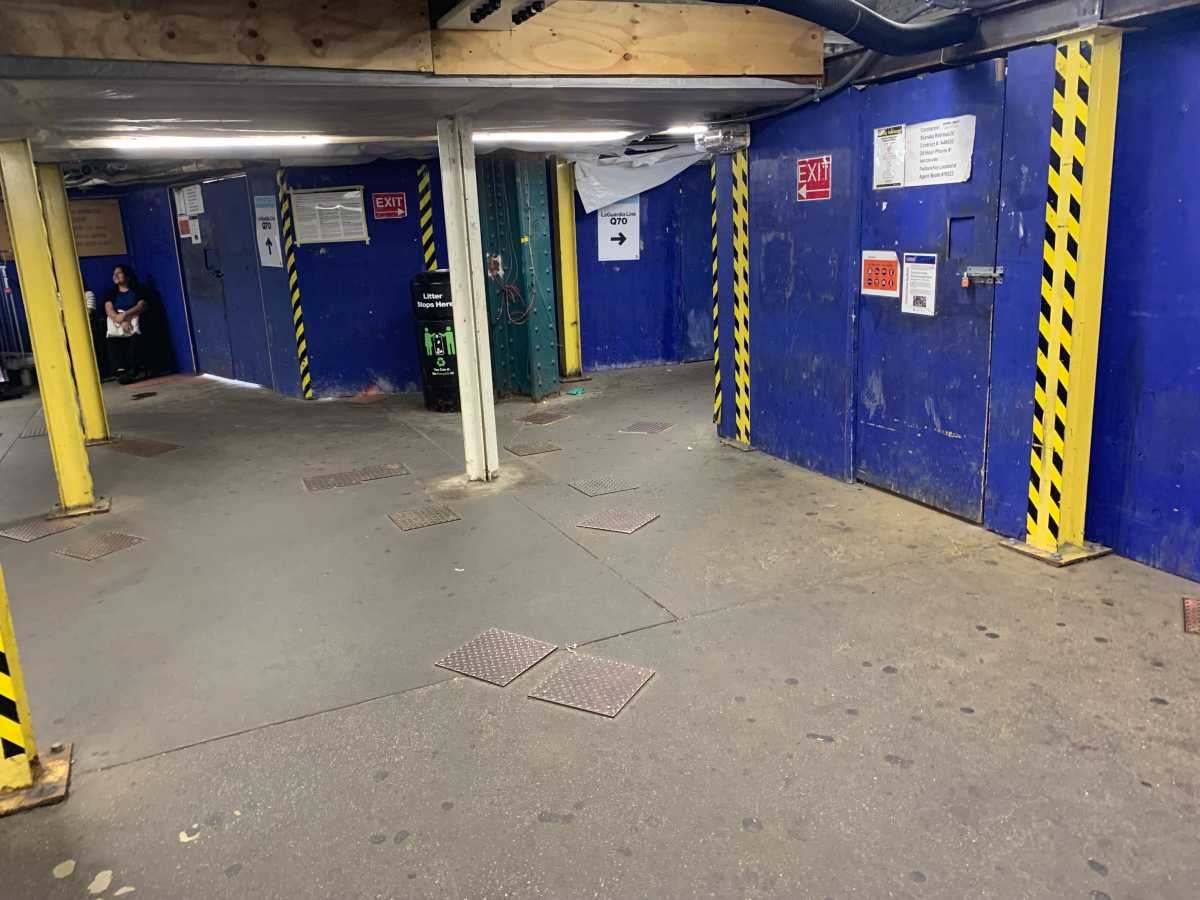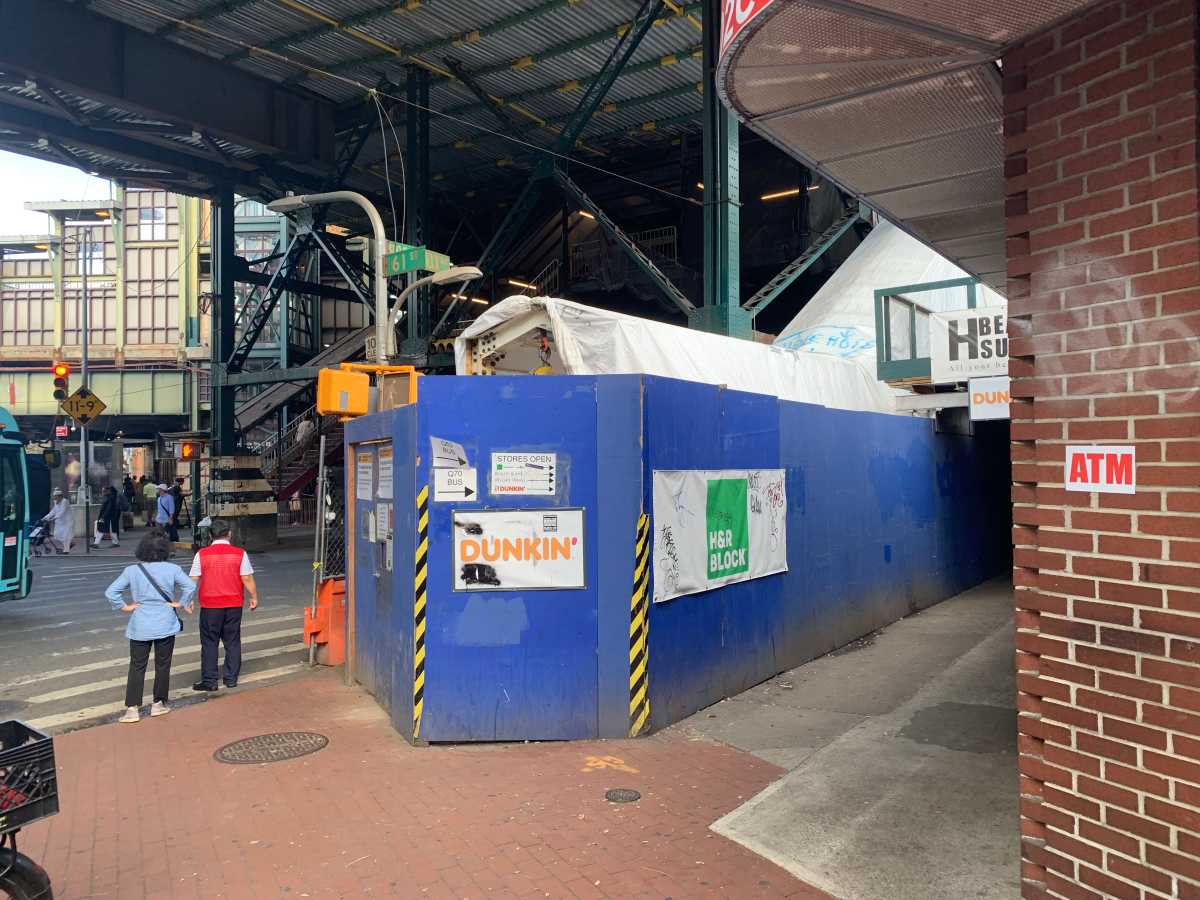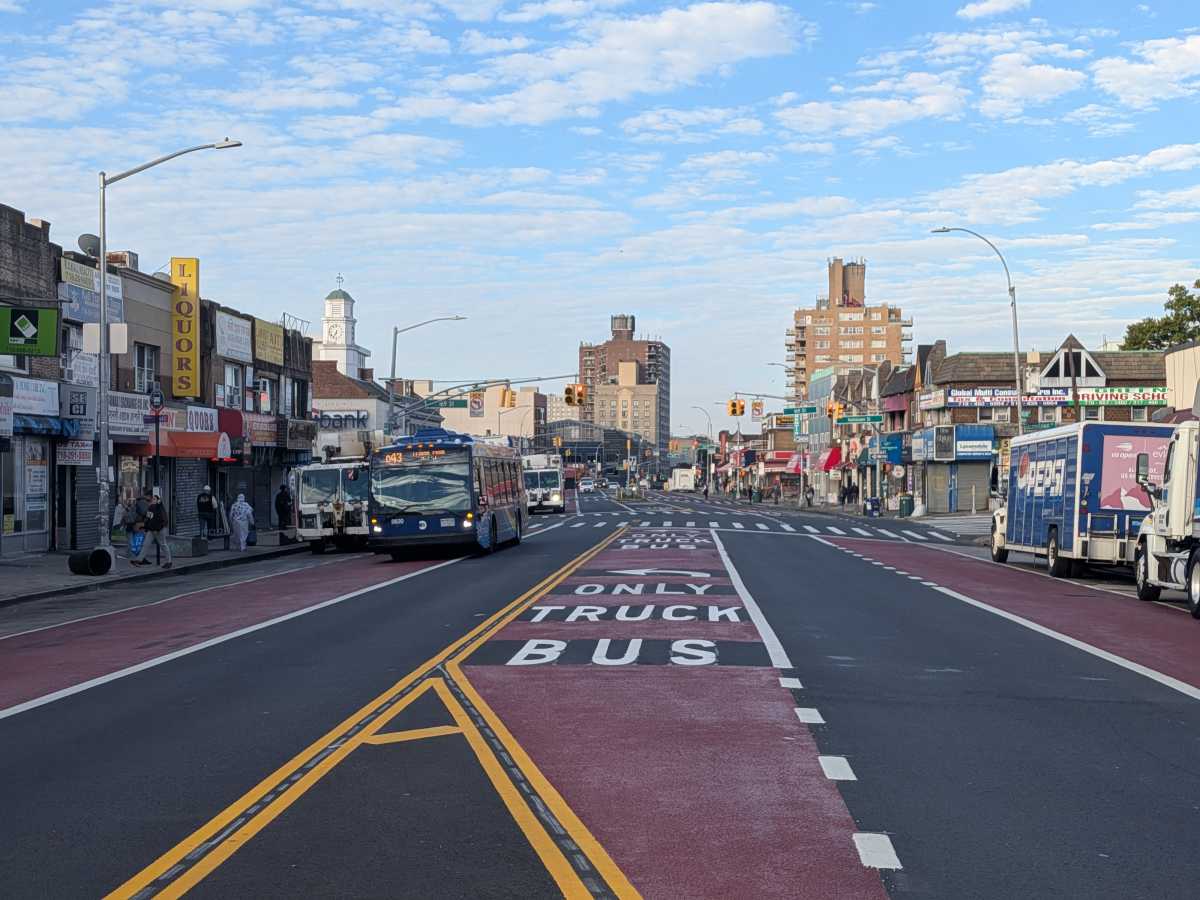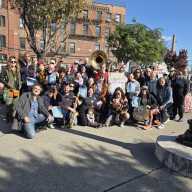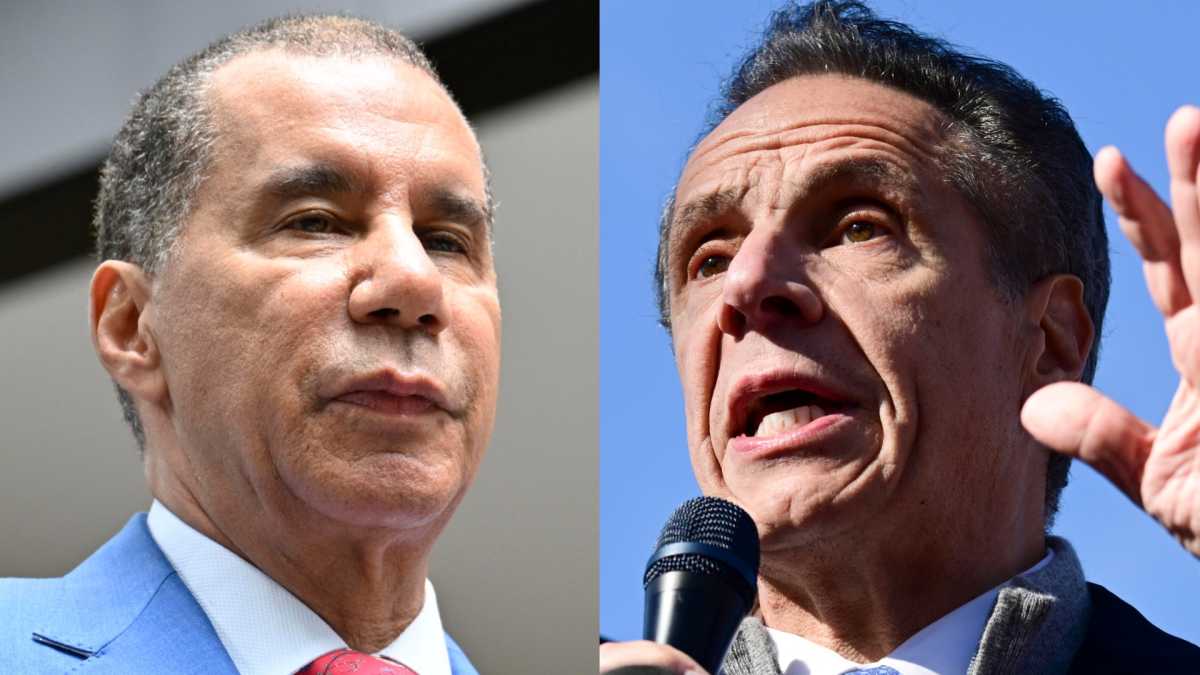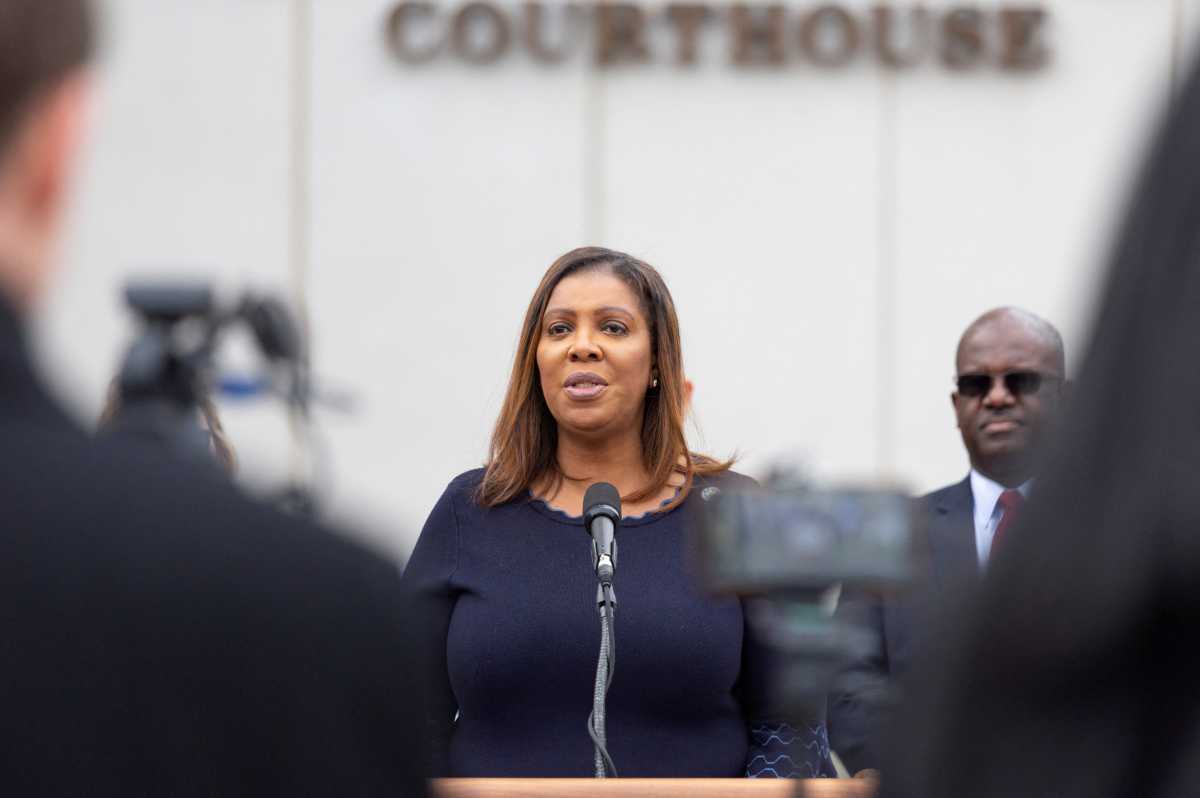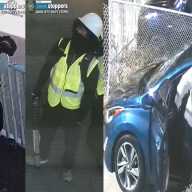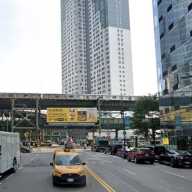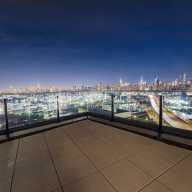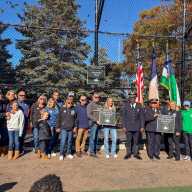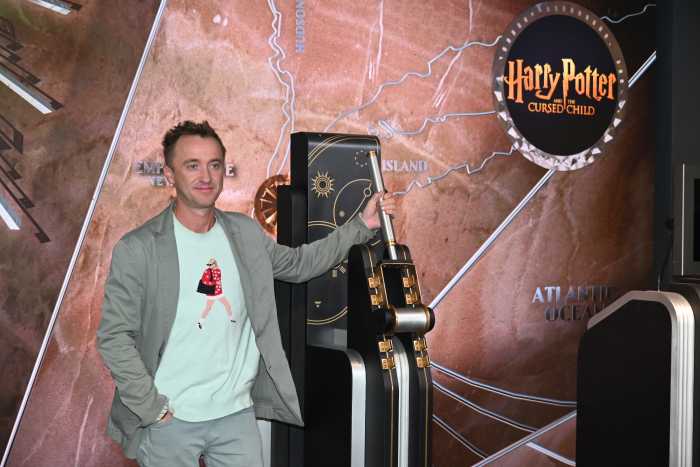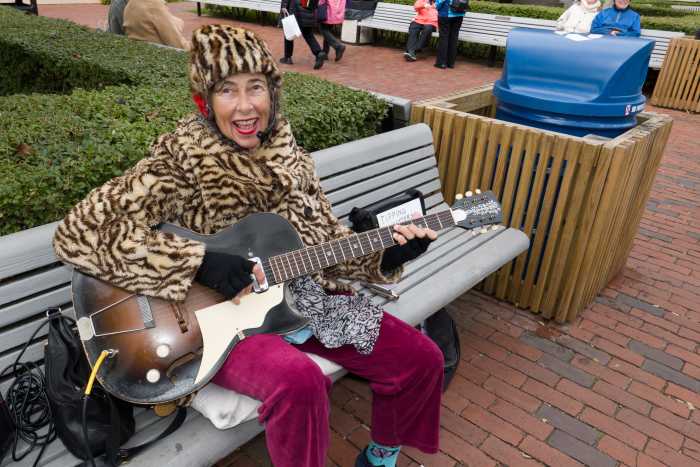A stretch of North Conduit Avenue in Ozone Park has become an area of focus for efforts to increase pedestrian-friendly infrastructure and planning near the busy roadway. Borough President Donovan Richards partnered with NYC Department of Transportation for a walking tour of the sidewalks and roadways along North Conduit on Oct. 23.
Attendees included Richards, members of the borough president’s office including parks and transportation liaison Laura Shepard, Community Board 10 Chairperson Betty Braton, Ozone Tudor Civic Association president Frank Dardani and Gloria Campbell, the acting director of the Reconnecting Communities Pilot Program at the transportation department.
The group met at the intersection of Dumont Avenue and 84th Street, traveled southeast diagonally along North Conduit to Rocket Playground on Whitelaw Street, briefly entered the pedestrian overpass that connects the playground to South Conduit Avenue and turned around to travel northwest past Tudor Park, ending the tour at 79th Street.
“This, to me, is a no-brainer,” Richards said of the project. “There were a number of deaths and crashes that span from here all the way to southeast Queens. Every time I see a cyclist or pedestrian killed I’m like, ‘We gotta look at this.’ …We have to get safety.”
Several deadly crashes have been reported along North Conduit in previous years. Notably, in 2021, 24-year-old Kimberly Ortega was killed near 79th Street after being struck by a driver while she was leaving the gym. In 2023, 54-year-old motorcyclist Dwayne General fell over after struggling to navigate the roadway near 79th, as well. Most recently, in November of last year, 47-year-old pedestrian Lucia Grant was killed in a hit-and-run after a vehicle struck her while she was crossing the roadway near Baisley Pond Park in Kew Gardens Hills at 6 a.m.
In June of this year, the transportation department responded to public outcry and began organizing the Conduit Corridor Plan, a long-term public safety project that spans from Atlantic Avenue in Brooklyn and Lefferts Boulevard in Queens. Officials began organizing public workshops and community outreach initiatives with residents in areas like South Ozone Park in order to locate specific areas of concern.
“There’s so much space that we could really could have something that works for all road users — for pedestrians, for cyclists and for drivers who deserve to get where they’re going safely,” Shepard said.
Campbell led the tour and shared information about areas of concern for the upcoming department project that aims to address pedestrian safety along North Conduit. She first noted the irregular intersections created by North Conduit’s diagonal path and the “unique” circumstance that many small parks surround those intersections. She said this makes it difficult for pedestrians to get to the parks, noting the lack of crosswalks despite the heavy traffic caused by drivers constantly turning off the road.
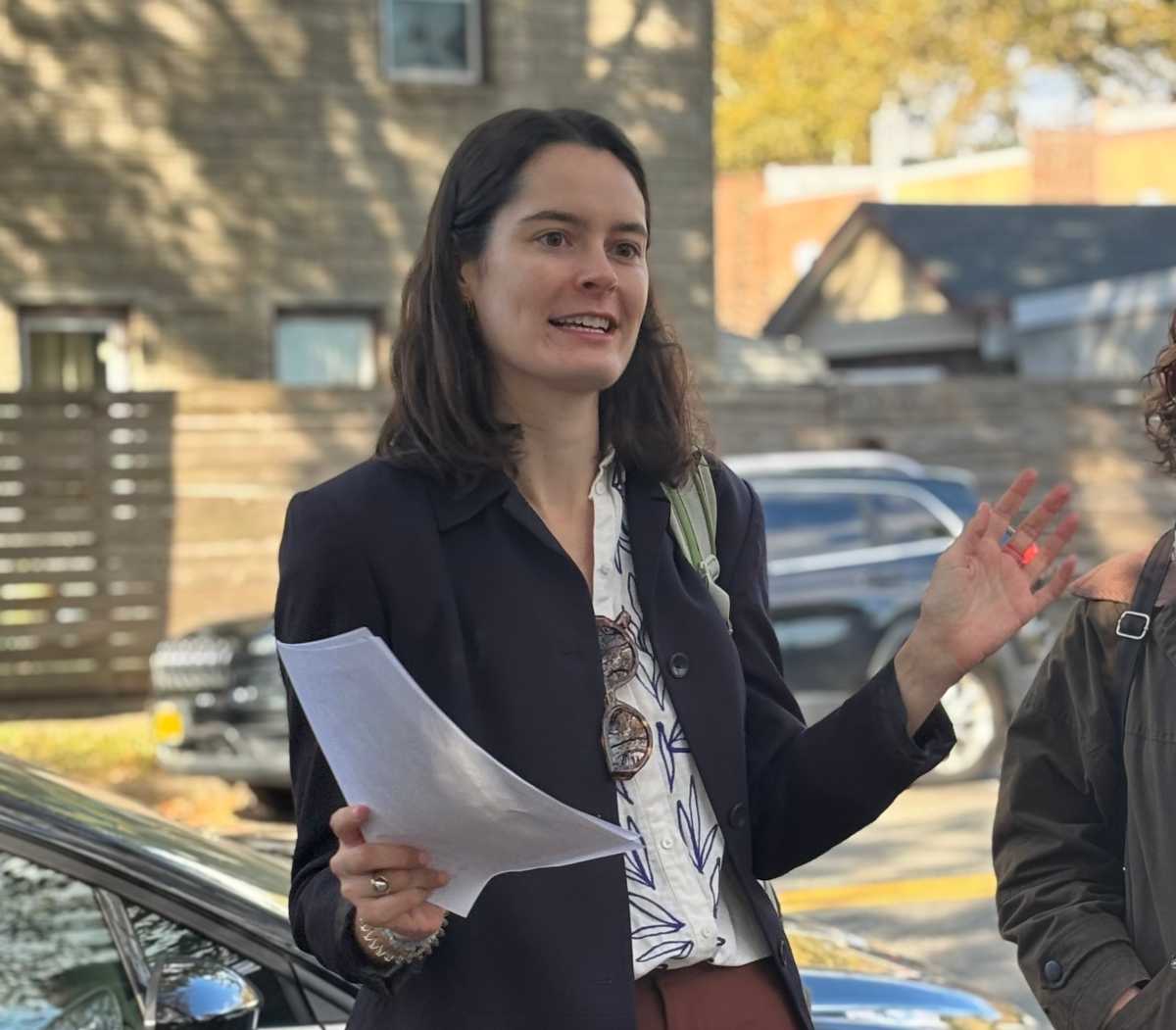
The only two options for pedestrians wanting to cross North Conduit is to travel to the pedestrian bridge near Rocket Playground or cross at 79th Street. Traveling from the playground to 79th, which is over half a mile apart, took the group close to 15 minutes.
Next, Shepard noted the difficulties cyclists encounter entering the pedestrian bridge due to the lack of “curb cut” on the sidewalk near the entrance. Curb cuts are not only cyclist friendly but disability friendly, as they provide dips in the sidewalk that provide a smooth path from the roadway to the walking path. Another concerning part of the pedestrian bridge, she continued, is the steep incline pedestrians and cyclists must travel up in order to get across it.
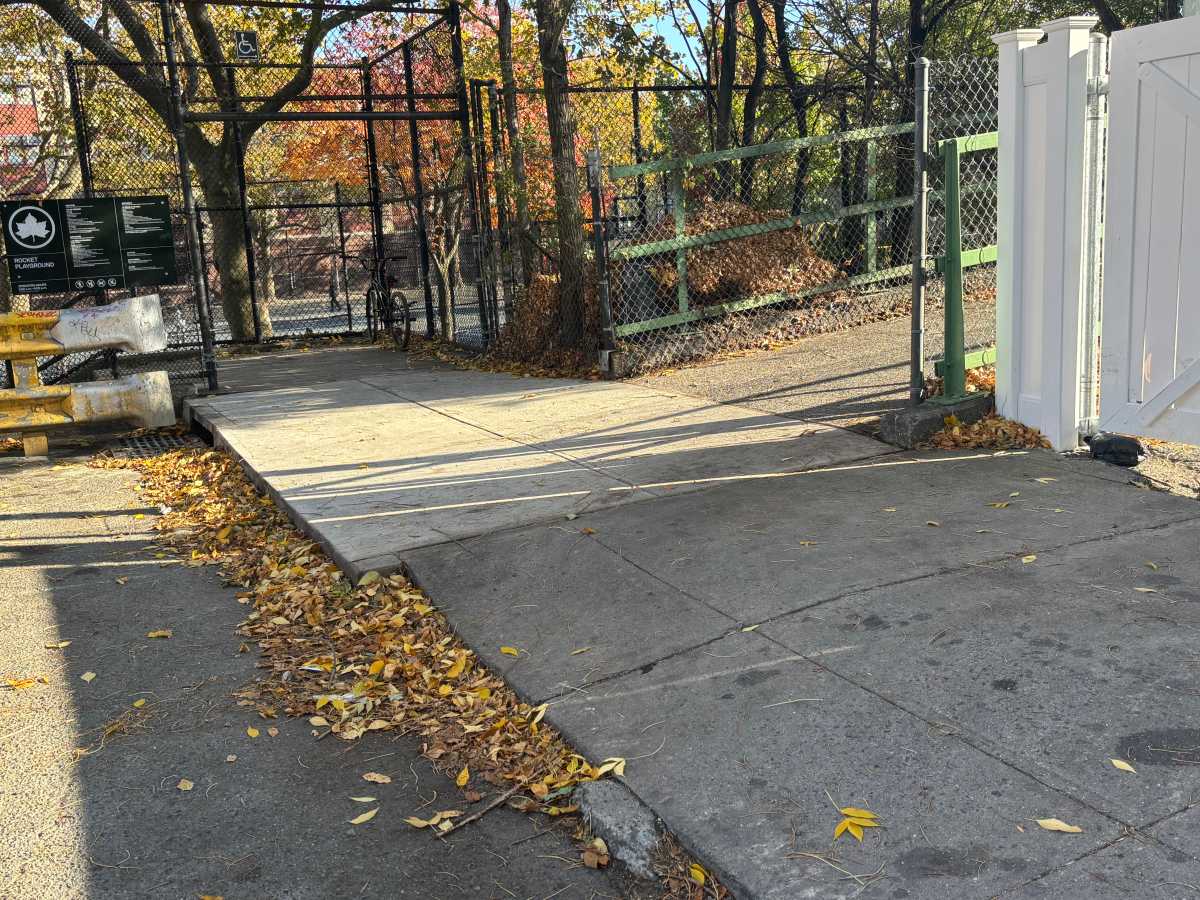
Once on the pedestrian bridge and overlooking the roadway itself, Campbell pointed out concerns in the design of the North Conduit, which the transportation department is also considering changes to. The DOT’s goal would be to make the roadways less highway-like and more like regular city streets. Campbell also noted the narrow turnaround drivers traveling southeast on South Conduit must use in order to switch directions and travel northwest on North Conduit.
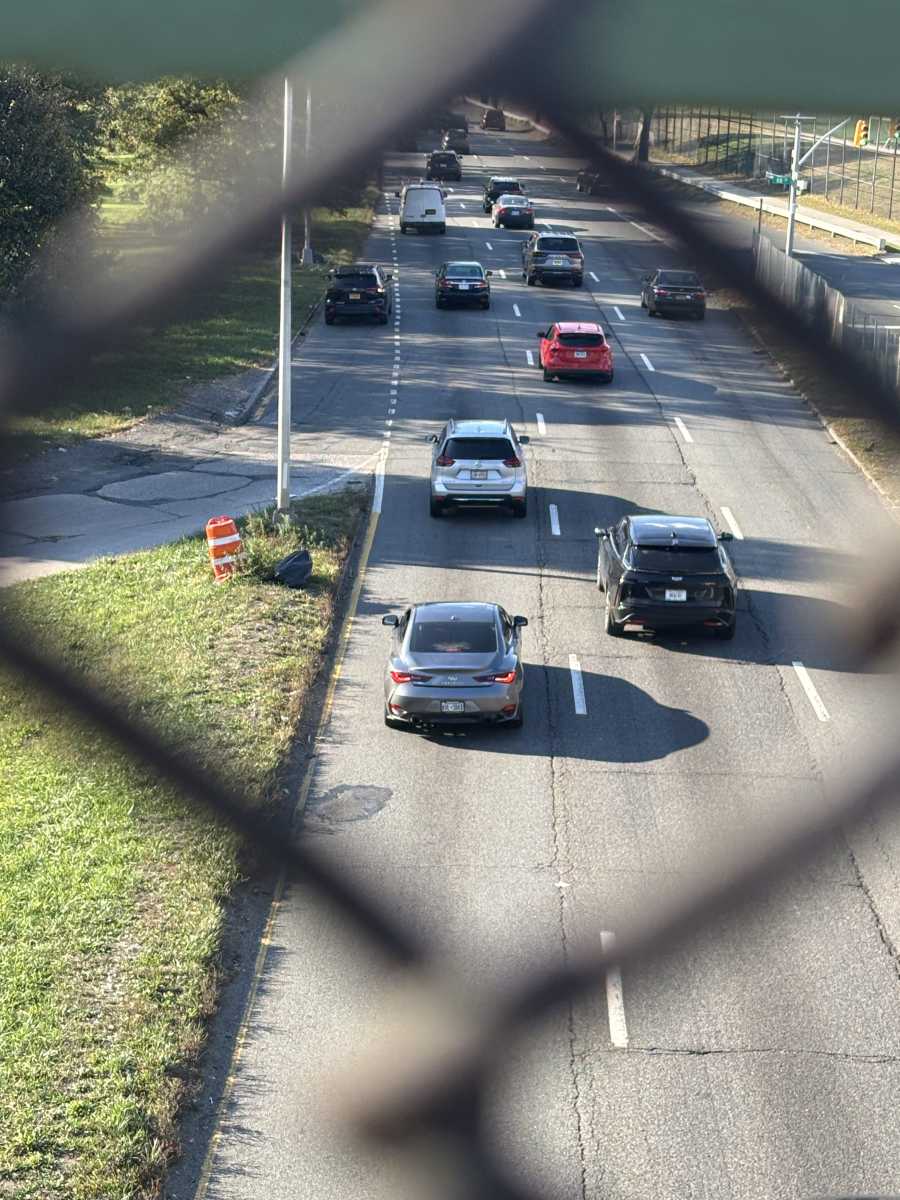
After exiting the pedestrian bridge and traveling northwest toward 79th, the group crossed two intersections near Dumont triangle, between 83rd Street and 84th Street, that had no crosswalks for pedestrians traveling parallel to North Conduit.
At 79th, the group crossed North Conduit to the medium separating the eastbound and westbound lanes, also with no crosswalk, and discussed use for the conduit’s green space if the roadways were to be reconfigured. The New York Department of Environmental Protection already installed green infrastructure drainage basins in the medium in 2011, and could potentially expand them in the area to help collect stormwater and drainage.
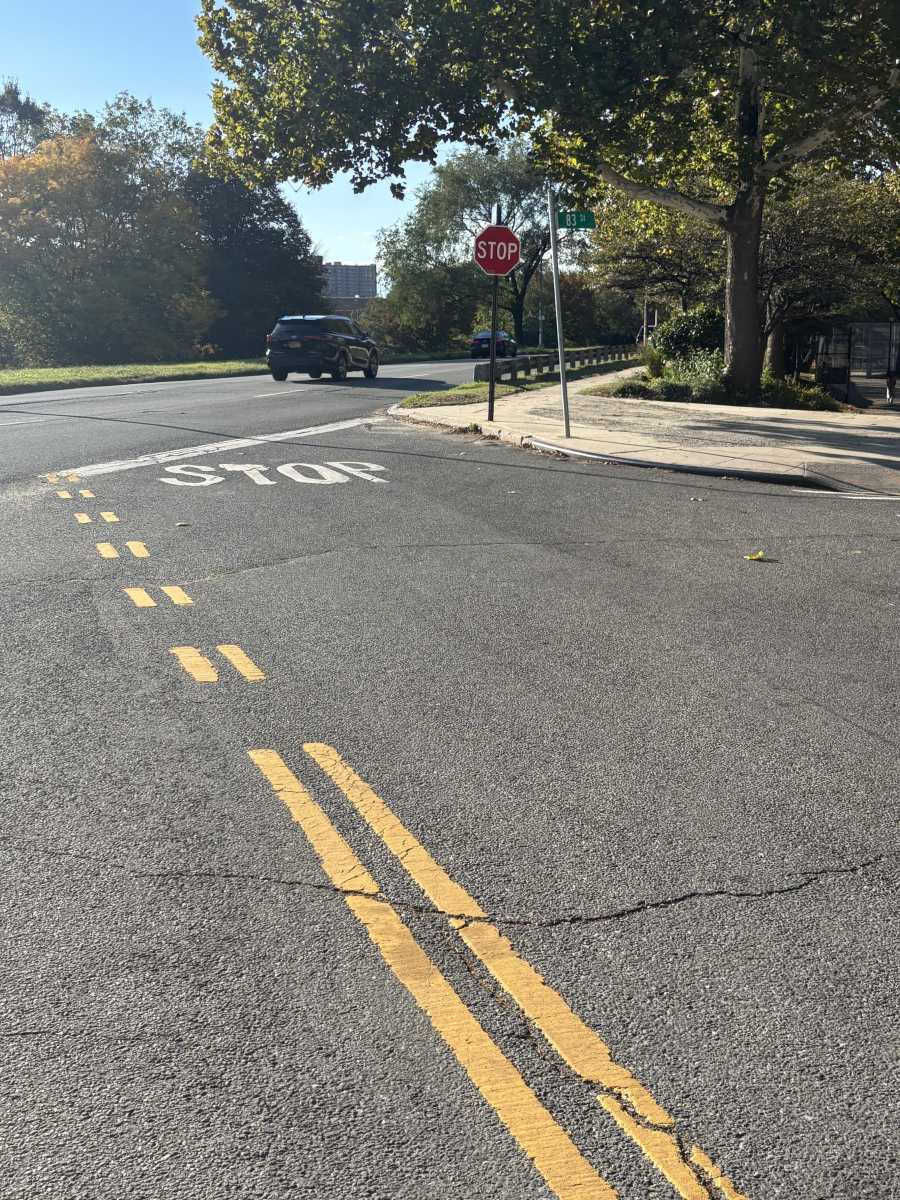
After the walking tour was completed, Richards said he is excited to start drafting plans and begin delivering solutions to the community.
“I’m grateful for the partnership with the DOT,” Richards said. “I can’t wait until the end of the year to really come up with a product.”
According to Craig Chin, a Queens borough planner at the city’s transportation department, the team will be drafting and pitching proposals in early 2026 and plan on making recommendations by the end of next year.
